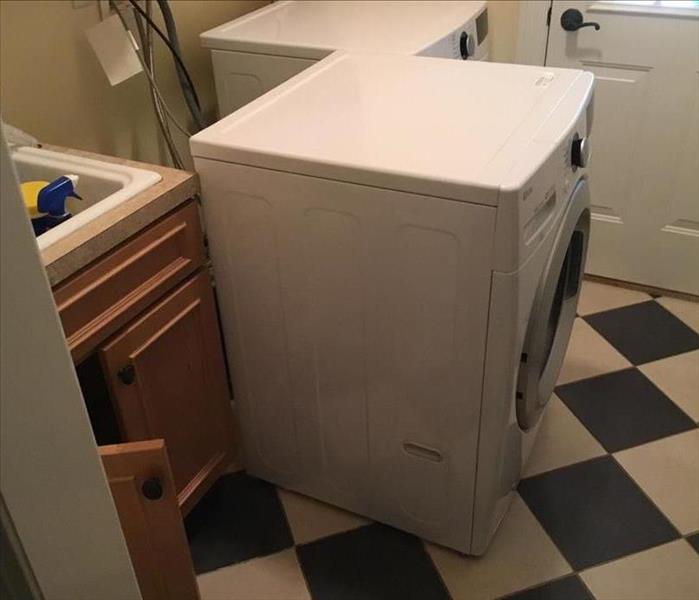How to Properly Clean Up Following a Washing Machine Flood
10/25/2019 (Permalink)
It’s easy to throw your clothes into the washing machine, set it, and forget it. Washing machines generally work so well, we can feel totally unprepared and thrown off guard if there’s a malfunction.
Unfortunately, the damage that can be caused by a broken washing machine can be severe. One load of laundry generally uses about 30 gallons of water, which is enough to fill a typical bathtub. All it takes is one broken hose or damaged seal, and you can have a huge water problem on your hands
Here at SERVPRO Hackensack / Little Ferry, we want to make sure you’re prepared to deal with a washing machine flood, so that you can minimize any long-term damage as much as possible.
Here’s your step-by-step guide for how to properly clean up after a washing machine flood:
Stop the Water at its Source and Turn Off Your Washing Machine
When your washing machine starts to malfunction, the first thing you want to do is cut off the water supply and unplug the machine.
To disconnect the water, you can either turn off the water valves to the machine, or just shut down your main water supply to stop the problem as quickly as you can.
You’ll also want to make sure your machine is fully unplugged to prevent the risk of electrical shock while you clean up the water.
Remove the Water
Next, you’ll want to remove as much water as you can.
You may need buckets, or at least a mop and towel to soak up standing water. You can also use a wet/dry vacuum to pull water up from porous materials like rugs and wood.
Dry Out the Affected Area
You want to dry out the affected area as quickly as possible.
Remove & Dry Your Clothes
Once you’ve dried the flood mess, you can turn your attention to the clothes you left in the machine.
Now is the time to remove and dry these items. You may find that there was also flooding inside the machine. If so, you’ll want to clear out any standing water and make sure the inside of your washing machine dries.
Dispose of Anything that Can’t be Salvaged
Unfortunately, some of your items may have been destroyed by the flooding.
Now is the time to dispose of items that cannot be restored
Sanitize the Affected Area
Once the affected area has been cleared out, it’s time to sanitize. A flooding problem can lead to a risk of mold growth and/or the spreading of contaminants. So, it’s important to use a disinfectant.
If you’re worried about potential mold growth, you can use a solution of one-part water to one-part bleach to sanitize the area.
Restore, Rebuild, and Replace, If Necessary
Once everything has been cleaned, it may be necessary to rebuild or restore what got damaged in the flooding.
You may need to paint the walls or install new carpeting. There may even be need to address your building structure to make sure the flood won’t have a long-term effect on the integrity and stability of your building materials.
If you need any help with clean up and/or restoration after a washing machine flood, know that SERVPRO of Hackensack/Little Ferry is here to help.
You can give us a call anytime 24/7 at: 201-441-1343.





 24/7 Emergency Service
24/7 Emergency Service
